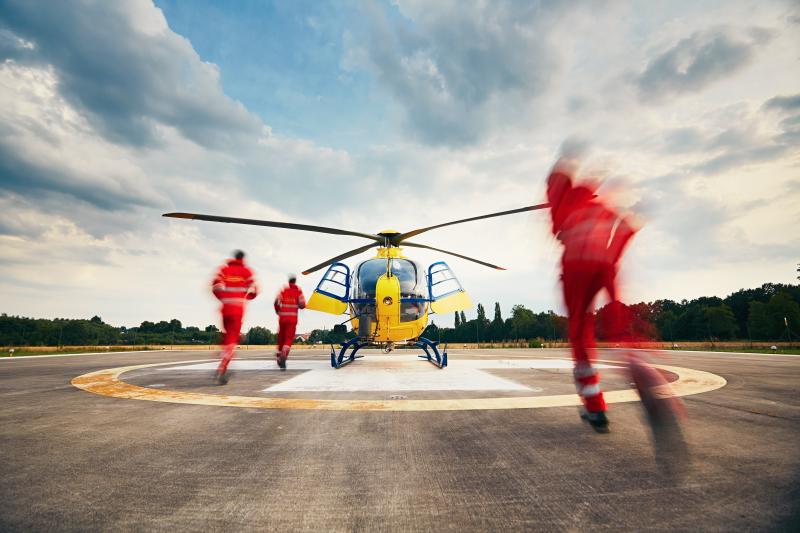
Hospital based heliports are required to ensure emergency and time sensitive trauma care. Although helicopter crashes are rare, they do occur and most often happen at take off or landing. With hospital-based heliport utilization on the rise, security-led practices are becoming crucial to mitigate risks and keep passengers safe.
Jeff Young, CPP, CPHA, GardaWorld’s National Director, Healthcare for Security Services – Canada provided an insightful segment during December 2nd’s Focus on Health Care Security webinar, hosted by Canadian Security Magazine.
His ten-minute presentation, titled “Hospital Heliport Safety – Are you prepared?” explained what hospital heliports are and why securing their operational integrity and establishing clear safety plans are critical to supporting exceptional patient care.
The following strategies were previously developed by Jeff within a formal Heliport Management Program (HMP), recognized by Accreditation Canada.
1. Identify common heliport safety risks
Be aware of obstacles on approach and take off flight paths such as construction cranes, debris, snow, ice, as well as persons and animals on or near your landing pad. You must also account for inadequate lighting (night landings), the absence of a functional windsock, lack of communications or updated information between airmen/women in the helicopter and onsite. Verify the state of your fire suppression system and your fire and emergency response measures since these pose a major threat if inadequately managed.
2. Detail risk mitigation strategies
Prior to any landing, establish clear communication protocols considering your common safety risks and addressing issues to prevent a crash. Appropriate security measures must be in place such as a daily heliport inspection and defined Standard Operating Procedures (SOPs) with air ambulance dispatch for advance notice of landings. There must be ongoing communication between your ambulance dispatch and helicopter operator in real time in addition to Formalized Notice to Airman (NOTAM) processes. Review your Remotely Piloted Aircraft System (RPAS) “drones” awareness protocols as they are increasing in popularity.
3. Adjust heliport operational procedures & training regularly
In addition to sharing your SOPs with stakeholders, it is recommended that you remain agile regarding your training. Train staff to conduct a Daily Heliport Inspection efficiently and how to safely prepare the heliport to assist flight crew, as necessary.
Document every landing and takeoff noting any issues or noncompliance for follow up action. You must also ensure annual fire suppression system testing are conducted by a certified company.
4. Develop clear fire safety & emergency response protocols
Invite local Fire Service representatives to tour the heliport and become familiar with your fire suppression system(s) and helicopter type (make/model). Ensure your fire suppression system is maintained to manufacturers specifications and tested as per local regulations. Develop and seek input for Heliport Fire/Emergency Response SOPs both internally & externally. Also account for appropriate internal response and training (i.e. Code Red response, heliport fire suppression system operations, air intake shut down, etc.).
The above measures merely scratch the surface on this specific security component within the healthcare environment. Rely on GardaWorld’s subject matter experts like Jeff Young, CPP, CHPA to get your hospital’s heliport fully prepared. Jeff’s over 30 years’ experience in the security industry and over 20 years in the healthcare sector will set you up for success.
For more information, contact us.
Watch the case study:








